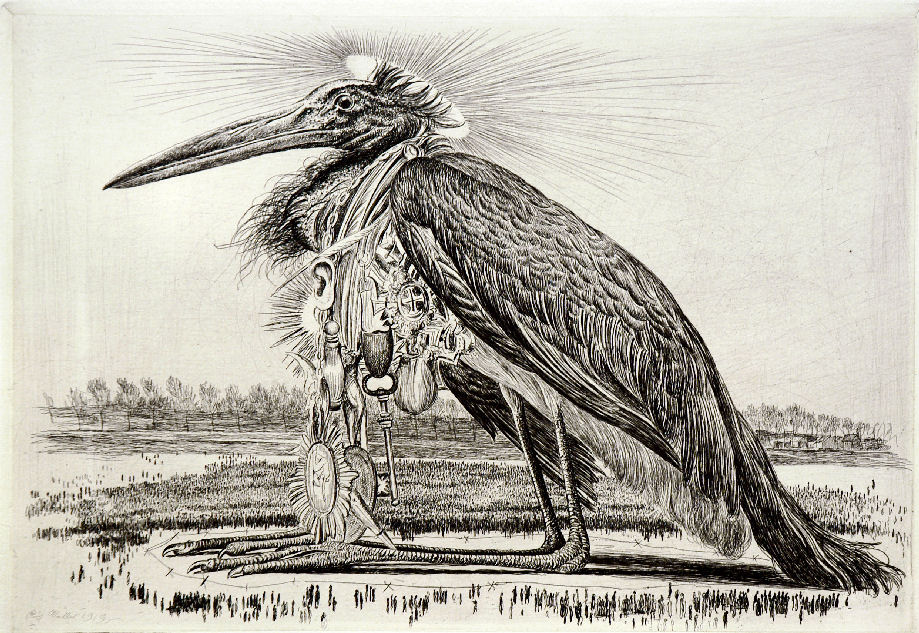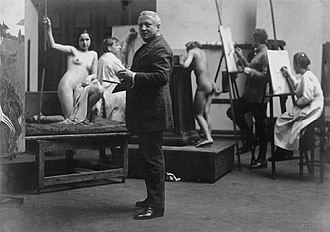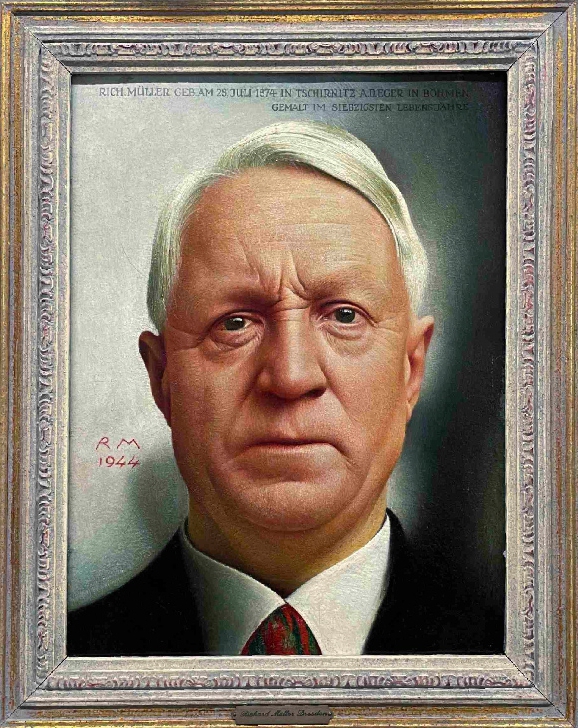Richard Müller was born the son of a weaver. His artistic talent was evident early on. In 1888, at the age of 14, he was encouraged by the Meissen porcelain painter H. Theil to apply to the painting school of the Royal Saxon Porcelain Manufactory in Meissen, where he was immediately accepted. In 1890, Müller went to Dresden on his own and without any financial security. Here he was admitted to the art academy, although he had not yet reached the prescribed entry age. His teachers were Leon Pohle , Ernst Moritz Geyger and Leonhard Gey. In 1893 he became self-employed as a painter in Dresden. Since he was penniless, he went to the municipal supply house every day, painted his studies there and earned his living with manual work. In the autumn of 1894, Müller exhibited landscape and animal studies for the first time in the Ernst Arnold art salon. In 1895 he met Max Klinger, who encouraged him to deal with etching techniques . In 1896 he was represented by Arnold at the exhibition “Hand Drawings of German Artists” and he won the Grand Rome Prize of the Prussian Academy of Arts, endowed with 6,000 gold marks, for his etching “Adam and Eve”.
He did his military service, which was shortened to one year through the mediation of “high-ranking art lovers”. After a trip to Italy, he took part in the German Art Exhibition in Dresden in 1899, where he received the large golden plaque for his painting “The Merciful Sister”. In 1900 he received a professorship at the academy, meanwhile as well known in Dresden as Klinger; His students included George Grosz, Richard Scheibe , Max Ackermann , Rudolf Schmidt-Dethloff , Erwin Bowien , Hermann Kohlmann , Horst Naumann , Max Hermann Mahlmann and Gerhard Augst. Richard Müller was a member of theGerman Artists Association. In 1933 he was appointed rector of the Dresden Art Academy and in 1935 dismissed from the rectorate by the Saxon Minister of Education, Wilhelm Hartnacke .
Richard Müller was a member of the NSDAP from 1933. In 1935 he was expelled from the party on the basis of Section 4, paragraph 2b of the NSDAP statutes (arrears of dues). He had provoked this exclusion himself by not paying the fee. As rector of the Academy in 1933, he confirmed the dismissal of his colleague Otto Dix, which had been initiated by Reich Commissioner von Killinger and which took place in the spring of that year. Contrary to other assumptions, Müller was not actively involved in the 1933 Dresden exhibition Degenerate Art.
Müller was highly valued as a painter during the National Socialist era. He was represented in 1937, 1938, 1939 and 1941 at the Great German Art Exhibitions in Munich’s Haus der Deutschen Kunst, including 1937 and 1939 with a pencil drawing of Adolf Hitler’s birthplace. In 1938 Hitler acquired two drawings there, e.g. “Braunau 1937”. In August 1944, in the final phase of the Second World War, Adolf Hitler included him in the God-gifted list of the most important painters.
In 2014, the relatively inconspicuous tombstone in front of the striking work of art was uncovered and restored for his wife.
Richard Müller’s grave is in the Loschwitz Cemetery – together with that of his wife Lillian Sanderson, a famous singer around 1900.




